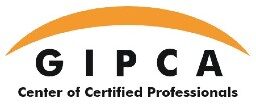A training needs assessment (TNA) is an assessment process that organizations use to determine performance requirements and the knowledge, abilities and skills that their employees need to achieve the requirements. There are three key areas that are considered accurate assessors of those needs:
- Skill proficiency of employees
- Employees’ frequency of skill usage
- Level of employees’ skills crucial to job performance
One of the outputs of the training needs assessment is a list of who needs what kind of training. For instance, your company may find that the IT department is failing to keep up with the industry standards and needs to undergo training that increases their knowledge about the latest technological innovations. Or maybe the IT interns are coming on full-time and require mentoring to become a competitive and productive part of the company. TNA aims to answer some familiar questions: why, who, how, what and when. Here’s a look at the descriptions of the questions and what analysis can to answer them.

- Why conduct the training: Organizations typically conduct trainings to tie the performance problem to a working need and make sure that the benefits of carrying out the training are greater than the problems. To answer this question, you have to conduct two types of analysis: feasibility analysis and needs versus wants analysis.
- Who is involved in the training: A training typically involves appropriate parties to solve the performance problem. To determine the target participants for the training, you have to conduct a target population analysis. This type of analysis allows you to learn as much as possible about the people who are involved in the deficiency and how to tailor a training program to engage them.
- How to fix the performance problem: Conducting training can help fix the performance problem. But you have to look for another remediation if training is not appropriate. To identify what skill deficiency to address, you must conduct a performance analysis. This type of analysis investigates how your company or department is performing as a whole.
- What is the best way to perform: There is a preferred or better way to do a task to get the best results. To identify the best way to perform, you must conduct a task analysis. This type of analysis gets down to the fine details of exactly what your employees are doing in their individual roles.
- When to conduct the training: Because holidays, work cycles, etc. affect the participants’ attendance at the training, you must determine the best timing to deliver training. You may conduct a context analysis to answer logistics questions. Context analysis is a method to examine the environment in which a business operates.
Training needs assessment levels
There are three levels of training needs assessment. These include the following:
Organizational level
The training needs assessment at the organizational level is a macro-level assessment that helps you determine areas where your employees lack the necessary skills or knowledge and provide need-based training. It aims to answer the following questions:
- Where is training most needed?
- Is the training needed for a specific department or a group of employees?
- Why is the training program recommended as a solution to the current problem?
TNA at the organization level helps you clearly define measurable outcomes for training, allowing you to improve the chances of success of the training program.
For instance, your insurance company’s claims processing department constantly gets poor feedback from customers, so you want to improve its customer service rankings. An organizational-level assessment reveals the problems in claims processing and determines the need for training employees involved in claims processing. It can also explain why the training program is necessary and how it can help you achieve your goal of improving your company’s customer service.
Operational level
At the operational level (also known as task or job level), TNA determines what kind of training do your employees need to achieve a specified level of proficiency. It involves task analysis, which determines the knowledge and skills required for specific tasks and correlates these requirements to the actual knowledge and skills of your employees. The gaps or problems revealed in this analysis can be used to determine the kind of training your employees need.
TNA at the operational level aims to answer the following questions:
- How is the job performed?
- What are the performance standards for the job?
- What are the knowledge, skills and abilities needed to complete the job successfully?
Some of the data sources that you can use to conduct TNA at the operational level include the following:
- Job specifications
- Job description
- Work performance standards
- Information from small and midsized enterprises (SMEs)
- Analysis of operational problems
Individual level
At the individual or personal level, the TNA determines how each employee performs his or her role. The difference between the actual performance and the expected performance helps you determine if there is really a need for TNA at the individual level.
TNA at the individual level gives you a complete picture of your employees’ performance and whether their performance meets expected standards. TNA at this level aims to answer the following questions:
- What is the expected performance?
- Do your employees possess the necessary knowledge and skills?
- What is the gap between the expected and actual performance?
- What impedes your employees to perform efficiently?
- What training program must be provided to your employees to meet expected performance standards?
How to conduct a training needs assessment.
There are four steps you should take to successfully conduct a training needs assessment. These steps include the following:
- Determine desired outcomes
- Identify problems or specific points of pain
- Determine desired knowledge, skills and behaviors
- Set training timelines and priorities
- Choose training needs assessments and formats
1. Determine desired outcomes
Determine where things are not working the way you need or want them to, and what success in those areas would look like. For instance, you may want to improve customer retention by about 5%, reduce support call time to under three minutes or increase new customer acquisition by 10%. To establish the metrics for success of your training program, you have to meet with your team leads, supervisors, managers, directors and other stakeholders. Once you have identified what your goals are, you can easily determine the behaviors that must be changed in order to reach those goals.
2. Identify problems or specific points of pain
The next step is to match your desired outcomes with the improvements in information, actions and abilities that support them. To do so, you have to break down duties and processes inherent to the outcomes so you can determine specific problems or points that need to be addressed.
For instance, if you want to decrease the volume of calls your customer support receives, you need to examine what causes the volume of calls you are currently receiving. The problem may lie with the information customers receive about your product or services, with how calls are recorded and followed-up on, with the frequency and level of proactive communication between customer contacts and account managers or with a combination of all of those.
There are a number of ways to identify areas that require improvement. Here are some of the most common and effective:
- Observation and assessment: This requires your team leads, supervisors, managers or external specialized organizations to assess employees in order to establish the gaps in skills.
- Surveys: This method requires you to ask employees about which areas they would like more training, support and resources. You have to make sure, however, that they write down their specific needs. Team-building or communication are such broad training needs, as an example, that you would need to conduct another training needs assessment on each of these topics. Some examples of specific training needs include how to resolve a conflict, how to effectively and deeply listen to a coworker or how to give feedback to colleagues.
- Data evaluation: This requires you to analyze HR records to determine if there are common errors, issues or inconsistencies that the training can address. HR records can include exit interviews, job competencies, job descriptions, performance evaluations, accident and safety reports and other company records such as sales, cost and production records. For instance, if one of your company’s departments has a dramatic increase in workplace accidents, you may review accident reports as part of your gap analysis before conducting training about safety practices and procedures.
- Individual interviews: You may also interview your employees, supervisors and clients to identify problems or gaps. If your company is providing safety training, for instance, interviewing the employees who have experienced or witnessed an accident would be advisable. Also, interviewing employees who have never had an accident could be useful in developing a training program that includes safe practices and procedures. If the accidents involved equipment, you may need to interview the company that serviced or manufactured the equipment. The information you can gather from your interviews can help you identify gaps that your company needs to address.
3. Determine desired knowledge, skills and behaviors
Once you have identified the specific problems you need to address, you can match training topics to the identified skill gaps. To do so, you should first come up with a list of knowledge, skills and competencies each trained employee needs to attain the established objectives. Then, you must have a way to determine if training has been successful at the individual level—the way to measure if the identified competencies and skills were achieved to the level required. These metrics for success are usually expressed as a series of learning goals tailored to each problem and the desired business outcome.
4. Set training timelines and priorities
Once you have determined the knowledge, skills or behaviors that your employees must develop to achieve established goals, it’s now time to develop the full training agenda. To do so, you must first determine the targeted end date for the initiative, and then rank priorities for individual sessions and groups and put them on a schedule. You should determine priorities based on their urgency (how quickly you need to see results from employees) and sequence (training that must occur before other training can happen).
5. Choose training needs assessments and formats
Now that you know who your target participants are, what training is necessary, what your goals are and how quickly the training program needs to be complete, you can choose how you want to administer the training. Some good options include virtual or in-person instructor-led sessions, self-guided audio and video programs, computer-based simulations and online training. Your Learning and Development resource—consultancy or in-house—can help you choose the right course suitable for your company and project.

